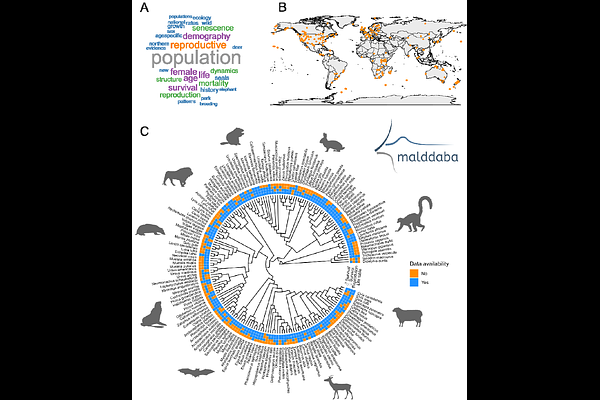A MammaLian Demographic Database for comparative analyses of evolutionary biodemography: malddaba

A MammaLian Demographic Database for comparative analyses of evolutionary biodemography: malddaba
Ronget, V.; Lemaitre, J.-F.; Spataro, B.; Humblot, L.; Gaillard, J.-M.
AbstractThe question of how individual age influences demographic transition rates, such as survival probabilities and reproduction rates, has long been a main question for demographers and evolutionary ecologists. This has resulted in the accumulation of studies estimating the age-specific demographic transition rates across the tree of life over the last few decades. Although this accumulation of studies has enabled comparative demographic analyses to be developed, such analyses remain difficult to perform because age-specific data are scattered across literature. Here, we present a new open-access database, malddaba, which compiles age-specific demographic rates for mammals in the wild from published information. Currently, the database encompasses 170 species from 250 publications, representing 428 age- and sex-specific survival series and 199 age- and sex-specific reproduction series. Each series is reported using a standardized approach aimed at facilitating the extraction and use of that dataset by anyone interested in comparative biology. We show how malddaba can be used to address a variety of questions, ranging from comparative ageing with the assessment of actuarial and reproductive senescence patterns in a wide diversity of mammals. We can also address questions related to comparative population dynamics. For this purpose, in addition to the raw demographic rate records, we were able to build 43 population-specific life tables using malddaba records, which allow demographic outputs to be estimated accurately, such as population growth rate and generation time for those species. The malddaba database will be regularly updated to keep adding new demographic estimates and bring a comprehensive and dynamic view of the diversity of demographic trajectories across mammals.